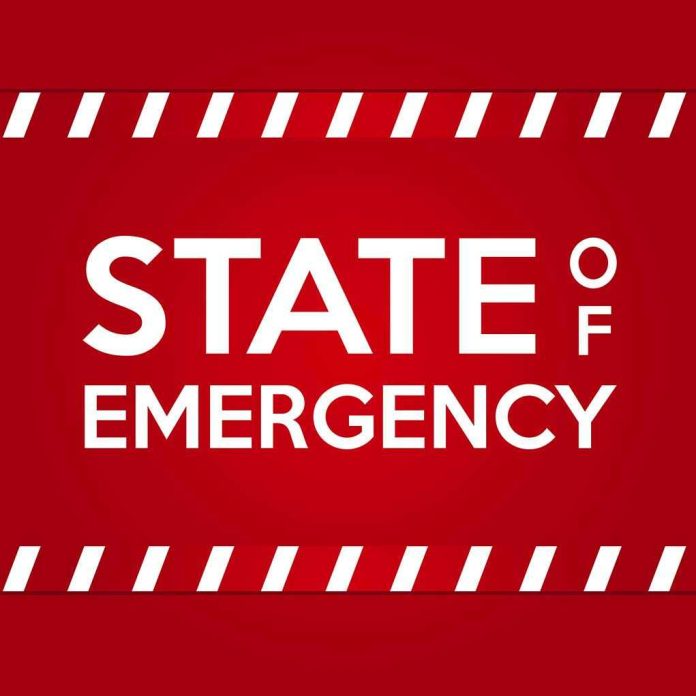
The instant lifeline that keeps millions of New Yorkers from hunger vanished overnight, not from a natural disaster, but from the flick of a political switch in Washington—leaving the state scrambling and families wondering if dinner will arrive at all this month.
Story Highlights
- New York declared a state of emergency as federal gridlock halted November SNAP benefits for millions.
- The shutdown exposes deep vulnerabilities in America’s safety net and state-federal power dynamics.
- Food insecurity spikes, food banks brace for a surge, and political pressure mounts with every day of delay.
- Experts warn the crisis could spark long-lasting changes—or deepen distrust in government aid.
November Promises Broken: SNAP Benefits Freeze Hits Home
November, a month many associate with gratitude and abundance, started with empty stomachs and fuller anxieties for 2.9 million New Yorkers. SNAP benefits—the monthly food assistance that quietly sustains a fifth of the state’s population—simply did not arrive. The culprit: a federal government shutdown triggered by a budget deadlock on the last day of October, cutting off the funds that support the Supplemental Nutrition Assistance Program just as November distributions were due.[1][2]
New York’s leadership, staring down the barrel of a humanitarian crisis, declared a state of emergency. The move, rarely seen in response to a bureaucratic standoff, was both a practical and symbolic gesture. On the ground, it meant marshaling state agencies, nonprofits, and local governments to coordinate hunger relief, distribute emergency resources, and keep the public informed. Politically, it was a calculated rebuke: a spotlight on federal inaction, and a plea for urgency directed at policymakers in Washington.[1][3]
How a Shutdown Shreds the Safety Net
SNAP—formerly known as food stamps—is a federally funded, state-administered program. Its unique position at the intersection of state and federal power made this shutdown particularly punishing. Unlike some entitlements, SNAP funding halts without a congressional appropriation. No workaround, no automatic continuation. While past shutdowns have delayed SNAP, the current freeze is unprecedented in scope and timing, hitting as families expected their monthly benefit to load onto EBT cards.[2][4]
State officials scrambled to communicate: No November SNAP until federal funding is restored. No letters in the mail—just urgent updates via websites, apps, and text alerts. Meanwhile, food banks and charities braced for a flood of desperate calls, as the first of the month brought neither groceries nor answers. The governor’s office announced a $40 million emergency infusion for hunger programs, but even this was framed as a stopgap, not a solution.[1][3]
Human Toll: From Pantry Lines to Political Fault Lines
For SNAP recipients—families living paycheck to paycheck, seniors on fixed incomes, children who count on school meals—the consequences were immediate. Food insecurity spiked. Grocery stores in low-income neighborhoods saw sales drop. Food pantries, already stretched by post-pandemic demand, warned of empty shelves. The emotional toll rippled outward: anxiety, frustration, and a mounting sense of abandonment by institutions meant to protect the most vulnerable.[2][3]
This crisis did not unfold in a vacuum. Advocates and policy scholars pointed to the event as a glaring example of how America’s social safety net is only as strong as the politics that fund it. Some called for automatic “fail-safe” mechanisms to fund SNAP during shutdowns, while others argued that fiscal discipline should not come at the expense of children’s meals. State leaders, caught in the crossfire, tried to shield their constituents while making it clear who held the purse strings.
Long Shadows: What This Breakdown Means for the Future
The immediate effects—empty fridges, crowded food banks—are visible and visceral. But the longer-term fallout could be just as severe. Public trust in government aid programs erodes when those in need see lifelines yanked for reasons they can’t control. Retailers and farmers lose revenue, and small businesses in struggling communities feel the pinch. Nonprofits warn of burnout among staff and volunteers as emergency measures stretch from days into weeks.[1][4]
Experts warn that this standoff is not just a policy glitch, but a warning shot. Without structural changes—at the federal, state, or even technological level—future shutdowns could trigger more widespread, longer-lasting disruptions. The pressure is on for Congress and the White House to find a path forward, not only to restore SNAP but to reconsider how such critical programs are insulated from political brinkmanship.
Sources:
OTDA SNAP Benefits Shutdown FAQ
CBS News: Food stamps/SNAP November 2025 shutdown
ABC News: SNAP benefits run dry as shutdown continues
NY Focus: SNAP shutdown November







